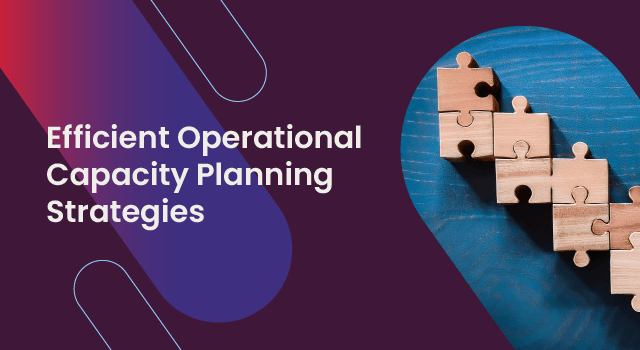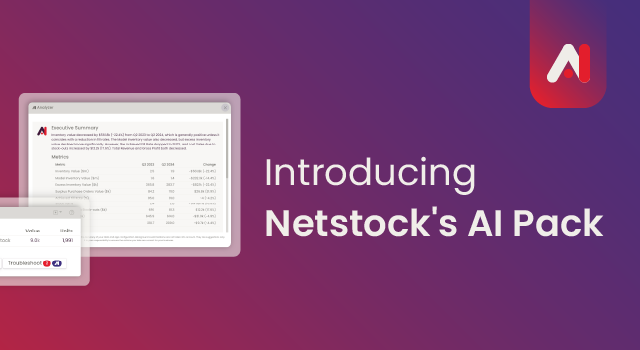Consumers have never had as many choices as they do today. Global competitors have driven prices down and raised customer expectations, making it increasingly difficult for businesses to compete. Organizations must drive costs down and attract and keep customers to succeed and grow.
The key to success is inventory optimization and accurate demand planning. It’s about having the right stock at the right time while carrying minimal surplus. Accurate demand planning allows you to reduce inventories without increased risk of stockouts. When planning improves, operational efficiency, inventory holding costs, customer service, and profitability will follow.
Demand optimization and planning software can help your business achieve these ideals. Let’s examine them.
What is demand planning software?
Demand planning software is designed to help businesses predict future customer demand. It analyzes historical sales data, market trends, and other relevant factors. It uses insights gained to help businesses to:
- Optimize inventory levels: By ensuring they have enough stock to meet demand without overstocking.
- Improve production planning: By forecasting future needs and allocating resources efficiently.
- Boost promotion planning: It identifies high-demand periods and tailors marketing strategies to suit.
Benefits of demand planning software
Demand Planning Software offers users many benefits. It boosts business profit through increased income, better current asset management, and reduced costs.
1. Improved forecast accuracy
Demand planning software uses advanced technology to deliver detailed forecasts. It analyzes market dynamics and historical and real-time data to adjust the forecast.
Modern demand planning systems use algorithms and machine learning to identify trend changes. They’ll pick up the smallest changes that might otherwise have gone unnoticed. The software uses data about external factors to produce precise forecasts, enabling inventory reductions without risking stockouts.
Demand planning solutions connect with real-time information sources like point-of-sale software and social media monitoring systems. The demand forecast identifies sales trends and provides a dynamically changing view of future demand. External elements like weather, social media activities, and economic trends are all factored in. The result is an accurate demand forecast you can use to adapt your production schedules and inventory holding.
2. Enhanced inventory management
Efficient inventory management is a major goal for most organizations. Inventory drives sales, but it also raises operational costs. Inventory optimization represents the ideal—that balance between too much and too little stock. If you have too much stock, you tie up capital unnecessarily and run up inventory holding costs. With too little stock, you’ll lose sales and possibly long-term customer relationships.
Accurate forecasts make it so much easier to improve inventory levels. They reduce the risk of stockouts without excess stock. With less stock, you need less warehouse space. Your carrying costs come down and the risk of obsolescence and spoilage wanes.
The best demand planning software can integrate with warehouse management systems. Use integrated demand forecasts to optimize storage and reduce handling and damage. Place high-demand items in more accessible locations and slow-moving stock in high or more distant storage. Let the software identify more damage-prone products and find locations with easier handling.
3. Supply chain optimization
Demand forecasting software should connect with all your supply chain software, including Enterprise Resource Planning (ERP), Customer Relationship Management (CRM), and warehouse management. Integration offers all users a single point of inventory access and ensures a unified view of supplier, inventory, and customer data across the supply chain.
The system updates data in real-time so everyone can access the most up-to-date data. Improved visibility and a common data source foster better communication and boost stakeholder collaboration. This enables Just-in-Time adoption and improved production planning.
Use the software to plan scenarios and gauge the impact of disruptions like market shifts and supplier delays. Identify risks and make contingency plans to keep your business profitable and your customers happy.
4. Financial benefits
Improved processes always have financial benefits. The installation of logistics forecasting software is no exception. Expect profits to rise as sales increase because you have inventory in the right quantities. Your reliability will earn customers’ trust, so they will continue to support your business. Satisfied customers will recommend your product, so you could quickly see a demand increase. Improved profits are not driven only by increased sales. Costs should drop too.
Your inventory should decrease, so you’ll need less warehouse space. As you cut excess stocks, your inventory holding costs will drop. Order processing, production planning, and resource allocation will improve.
You can budget more effectively and improve your cash flow management with reliable forecasts. Faster inventory turnover releases capital, improving cash flow and enabling financial flexibility. Use this money to invest in growth opportunities or cover short-term expenses.
5. Collaboration and shared planning
Demand optimization software provides a platform for consensus forecasting. These systems collect data from multiple stakeholders. Sales staff, marketing, production, and even external stakeholders can contribute. In this way, a more complete view of future demand emerges.
Multiple perspectives help to create a more accurate forecast without bias or blind spots.
Consensus forecasting encourages interdepartmental communication. Suppliers can use the demand forecast to plan production and reduce supply disruptions. They can quickly respond to market changes. Businesses throughout the supply chain can make more informed data-driven inventory, production planning, and resource decisions.
6. Customer satisfaction and service
Demand forecasting software directly benefits service improvements and customer satisfaction. Customers know they can trust your business to provide reliable service and never let them down.
The best demand planning software analyzes customer behavior to identify buying behavior and preferences. Use this information to recommend products and plan more successful promotions. Give your product or service something special. Personalize the customer experience with retail demand planning system data.
7. Operational efficiency
Demand planning software benefits extend across the organization. Now, you can confidently plan human resources to match your future workload. Recruit and train staff ahead of time, and ensure you have the resources to meet sales requirements.
Make strategic decisions on what to do when demand slows. If your business experiences seasonal demand, you can reduce labor costs during slow periods or build stock to cover peak demand. Still, you need reliable demand forecasts to plan effectively.
Demand forecasting software encourages interdepartmental collaboration. It provides a central platform where all departments can view resource allocation plans. Finance can budget and the sales department knows when they will have the stock.
Identify bottlenecks in the resource plan and act to avoid future disruptions. Effective staffing and resource allocation contribute to cost reductions and improved profitability.
8. Technological integration
An effective demand planning system must integrate with your existing software. Only integrated software can deliver a holistic system so all departments can access the same up-to-date data.
When you integrate software packages, you can automatically transfer data across systems. This can save time and effort, as there is no need for manual input.
Demand planning tools are easy to adopt and use. A simple, intuitive interface reduces the time it takes to implement the system. Users quickly learn how to use the new tools, cutting training needs.
Effective visualization tools, like graphs and charts, allow users to easily understand complex data sets and identify trends. Shared dashboards encourage interdepartmental communication, leading to cooperation and shared knowledge.
Achieve your business objectives with demand planning software
As product ranges increase and prices drop, the only way to compete is to ensure that increasingly discerning customers continue to support your business. Customers must trust that you can reliably supply the products they seek at a competitive price. With demand planning software you can confidently reduce your inventories, knowing you won’t let customers down. Reducing inventories releases capital and improves cash flow, enabling alternative investment.




